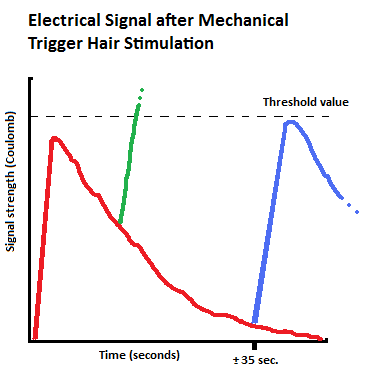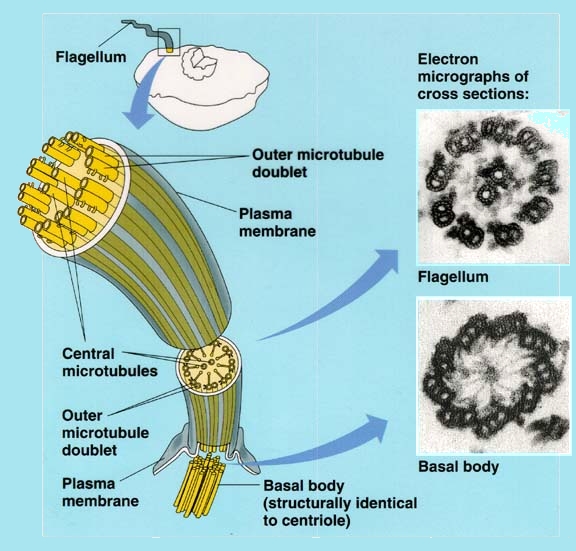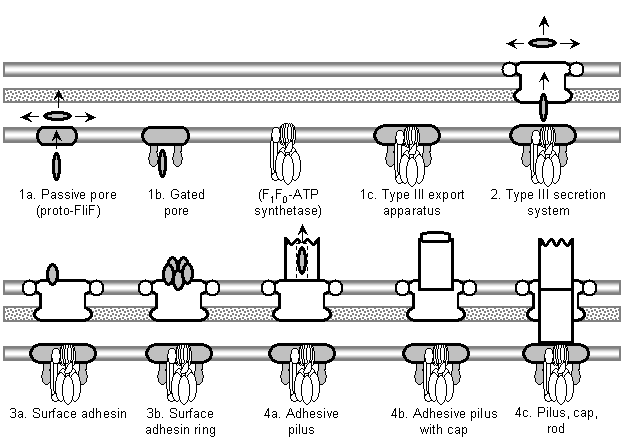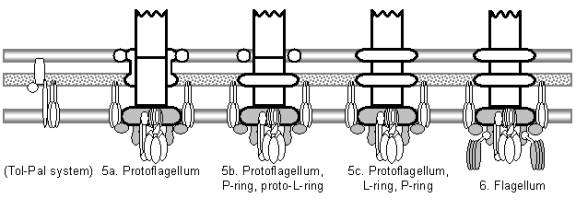Do you have a reference?They're certainly mentioned in neurology.
You are using an out of date browser. It may not display this or other websites correctly.
You should upgrade or use an alternative browser.
You should upgrade or use an alternative browser.
Is consciousness to be found in quantum processes in microtubules?
- Thread starter Write4U
- Start date
- Status
- Not open for further replies.
Write4U
Valued Senior Member
Microtubules in neurons as information carriersDo you have a reference?
Erik W. Dent, PhD

IMO, that should read; "serving as short mobile........?"Abstract
Microtubules in neurons consist of highly dynamic regions as well as stable regions, some of which persist after bouts of severing as short mobile polymers. Concentrated at the plus ends of the highly dynamic regions are proteins called +TIPs that can interact with an array of other proteins and structures relevant to the plasticity of the neuron.
https://www.ncbi.nlm.nih.gov/pmc/articles/PMC3979999/It is also provocative to ponder that short mobile microtubules might similarly convey information with them as they transit within the neuron. Thus beyond their known conventional functions in supporting neuronal architecture and organelle transport, microtubules may act as “information carriers” in the neuron.
Last edited:
Write4U
Valued Senior Member
@ Bells.
I owe you an apology. You were correct to call out my "error" (not an intentional act) in regards to the quoted passage where I inserted a "clarification" in error.
p.s. the tau tangles are at the bottom as I properly identified them.
I owe you an apology. You were correct to call out my "error" (not an intentional act) in regards to the quoted passage where I inserted a "clarification" in error.
The word extending misled me into believing that they meant the microtubules extending from the axon, but they were talking about the diseased "tau fibers" extending from the axon, not the microtubules or the tau tangles. My oversight. Sorry for my error.When Alzheimer examined thin slices of her brain under a microscope, he noticed that nestled right next to the labyrinth circuitry of healthy nerve cells were small clumps of hard, barnacle-like bundles of proteins called amyloid plaques and that many of the fibers extending from the ends of the nerve cells -- (microtubules) -- different proteins called tau — were thickened and tangled.
p.s. the tau tangles are at the bottom as I properly identified them.
Last edited:
Just an example.Why human consciousness per se?
So is urea. But claiming "consciousness is found in urea" would be equally misguided.OK. I firmly believe that microtubules meet that requirement. They are an unchanged functional common property of ALL Eukaryotic biological living organisms, since from the Prokaryotic epoch, where they existed in a simpler form because they only needed to execute simple RNA instructions, instead of the more complicated DNA instructions of modern Eukaryotic organisms.
And an ultrasuperior, super spectacular fantastical expert at that!A Microtubule is an expert at "one and zero". It is a dynamic self-referential polymer, AFAIK.
Write4U
Valued Senior Member
No doubt. But what does urea do?Just an example.
So is urea. But claiming "consciousness is found in urea" would be equally misguided.
https://en.wikipedia.org/wiki/UreaFriedrich Wöhler's discovery in 1828 that urea can be produced from inorganic starting materials was an important conceptual milestone in chemistry. It showed for the first time that a substance previously known only as a byproduct of life could be synthesized in the laboratory without biological starting materials thereby contradicting the widely held doctrine of vitalism.
The difference, IMO lies in the evolved functionality. Microtubules are expert in information processing.
I agree......And an ultrasuperior, super spectacular fantastical expert at that!
It seems that evolution and natural selection has come up with this incredible little "information processing polymer" a long time ago and it has had a few billion years to refine and network its role in all of Eukaryotic organisms. This is not trivial.
IMHO, of all the possible candidates for a possible emergent consciousness, microtubules must rank high due to their demonstrated ability for information processing.
The concept is actually just a refinement of the notion that neural networks give rise to emergent consciousness.
The chemical machine that does most of the work in a neural network is the microtubule. Can billions of networked microtubules give rise to an emergent consciousness? No one has yet put forth a fatal flaw in the concept, AFAIK.
And ORCH OR remains a possible, albeit unproven framework that suggests a possible emergent form of consciousness, with the introduction of a threshold function which creates an experiential event. This is not necessarily woo and it is certainly too early to call it that.
Last edited:
Write4U
Valued Senior Member
I just remembered the wonderful closing mechanism in the leaves of the Venus fly-trap. This trigger mechanism is dependent on cilia and of course cilia consist of microtubules.
Seems the Venus fly trap is the superior "mouse trap" with a built-in '"failsafe" mechanism.

 Note the treshold function!
Note the treshold function!
https://www.flytrapcare.com/how-venus-fly-traps-work
and this
What is required to close a trap?
As most of you already know, it requires 2 stimulations of a trigger hair within 35 seconds in order to close a trap of the VFT, and we all know why the plant responds like this, to rule out sand or rain as prey. But what this article will try to clarify is what happens in the trap lobes when these trigger hairs are being stimulated.
Seems the Venus fly trap is the superior "mouse trap" with a built-in '"failsafe" mechanism.


https://www.flytrapcare.com/how-venus-fly-traps-work
and this
The Cilia of the Venus Flytrap
I’m going to show you the beautiful structural patterns of carnivorous plants, those parts of the plant both related and unrelated to eating things. From the shape of the cilia on Venus flytraps, to the light windows on Sarracenia, to the ribbed peristomes of Nepenthes and the overlooked stipules of sundews, there’s much for the hobbyist to observe beyond the macroscopic display of a well-grown plant. It’s like a miniature landscape, a whole world rarely visited by the sight of humans, but a world which our beloved plant’s insectoid prey is all too familiar with.
The first structure I want to take a peek at is larger than life: the prison-bar hairs of the Venus flytrap.
https://carnivorousplantresource.com/the-cilia-of-the-venus-flytrap/For all its carnivory on display, it is Dionaea’s awesome cilia which are perhaps one of the most iconic floral attributes in the world. They subliminally hiss carnivory, as if the hairs themselves attracted prey and killed it. Perhaps that’s how we understand ourselves more than we understand the plant.
Last edited:
Write4U
Valued Senior Member
Continuing the quest.
The Evolution of the Flagellum, And the Climbing of "Mt. Improbable "
Sean D. Pitman, M.D.
© May 2006 Last Updated: August 2010

The evolution of the flagella.
The "Little" Steps Up the Mountain .


http://www.detectingdesign.com/flagellum.html#Eukaryotic
Wow, this is a very interesting site. And from initial reading, a very objective look at the evolutionatry history of dynamic bio-chemical structures such as cilia and flagella.
The Evolution of the Flagellum, And the Climbing of "Mt. Improbable "
Sean D. Pitman, M.D.
© May 2006 Last Updated: August 2010
The eukaryotic flagellum is quite a bit different from the bacterial or prokaryotic flagellum. To emphasize the significant underlying mechanistic differences, the eukaryotic flagellum is also called a "cilium" or "undulipodium". The only thing that the bacterial, archaeal, and eukaryotic flagella really have in common is that they project a whip-like structure from the cell that moves in such a way that it produces useful motility.

The evolution of the flagella.
The "Little" Steps Up the Mountain .


http://www.detectingdesign.com/flagellum.html#Eukaryotic
Wow, this is a very interesting site. And from initial reading, a very objective look at the evolutionatry history of dynamic bio-chemical structures such as cilia and flagella.
Last edited:
Write4U
Valued Senior Member
Function of Microtubules
Cell Movement
Our dear friend the slime mold crawls by contraction and expansion. AKA, "pseudopodia".
How does a slime mold "know" when to start walking in search of food?
It is a chemical reaction of course, but so is hunger in humans and that causes us to go shopping for food, just like a slime mold, with the exception of wearing boots......
Cell Movement
Microtubules give structures like cilia and flagella their structure. Cilia are small protuberances of a cell. In humans, they are found on cells lining the trachea, where they prevent materials like mucus and dirt from entering the lungs.
Flagella are tail-like appendages that allow cells to move. They are found in some bacteria, and human sperm also move via flagella.
https://biologydictionary.net/microtubule/Microtubules also allow whole cells to “crawl” or migrate from one place to another by contracting at one end of the cell and expanding at another.
Our dear friend the slime mold crawls by contraction and expansion. AKA, "pseudopodia".
https://en.wikipedia.org/wiki/PseudopodiaA pseudopod or pseudopodium (plural: pseudopods or pseudopodia) is a temporary arm-like projection of a eukaryotic cell membrane. Filled with cytoplasm, pseudopodia primarily consist of actin filaments and may also contain microtubules and intermediate filaments.[1][2] Pseudopods are used for motility and ingestion. They are often found in amoebas.
How does a slime mold "know" when to start walking in search of food?
It is a chemical reaction of course, but so is hunger in humans and that causes us to go shopping for food, just like a slime mold, with the exception of wearing boots......
Last edited:
exchemist
Valued Senior Member
All this reminds me rather of Flanders and Swann's "Wompom" song.Just an example.
So is urea. But claiming "consciousness is found in urea" would be equally misguided.
And an ultrasuperior, super spectacular fantastical expert at that!
In medicine there are several agents that interfere with microtubules in several various ways. No cognitive effects (or side-effects) are noted whatsoever (with any of the classes).
How do you explain this fact??
To me this is a straight up disproof of your arguments. Prove me wrong
How do you explain this fact??
To me this is a straight up disproof of your arguments. Prove me wrong
Last edited:
Write4U
Valued Senior Member
You underestimate the versatility of microtubule functions. Not all microtubules have the same functions. For instance, microtubular inhibitors can stop run-away cell division such as in cancer.In medicine there are several agents that interfere with microtubules in several various ways. No cognitive effects (or side-effects) are noted whatsoever (with any of the classes). How do you explain this fact??
https://www.goodrx.com/microtubule-inhibitorsMicrotubule Inhibitors
Microtubule inhibitors are used to treat ovarian cancer, breast cancer, lung cancer, kaposi's sarcoma, and prostate cancer. They work by stopping cancer cell growth and preventing the spread of the cells.
You overlook that microtubules have many functions and that only the microtubules in the brain are involved in "thinking", and even here not all microtubules are involved in conscious thinking.To me this is a straight up disproof of your arguments. Prove me wrong
Anesthesia targets a specific kind of microtubules in the brain and renders a person temporarily into an unconscious object. However there are billions of other brain microtubules which continue to regulate the subconscious maintenance of organ functions (interoception). Anesthesia does not affect their function. If it did, you'd die.
Visualize a "breaker panel" and you switch off the breaker to you television. Your television goes dead but it only affects that specific circuit and leaves all the other circuits untouched. Your refrigerator will continue to function just fine and keep your food fresh. The reverse can also be achieved.
Stuart Hameroff is an anesthesiologist and one of the authors of ORCH OR. He does know the exact amount of anesthesia to administer and not kill you. He is the proof that one can be selective in inhibiting conscious microtubule functions witout affecting other brain functions. Do check out his video. Post #1. Its quite interesting. And demonstrable in practice.
Last edited:
Write4U
Valued Senior Member
Microtubules gone haywire.......All this reminds me rather of Flanders and Swann's "Wompom" song.
Aren't all microtubules polymers of tubulin? How can they have different functions if they are self-sufficient to produce consciousness? Of course microtubule effects depend on their neighbouring structures. You are claiming here that microtubules produce cognition by themselves.You underestimate the versatility of microtubule functions. Not all microtubules have the same functions. For instance, microtubular inhibitors can stop run-away cell division such as in cancer. https://www.goodrx.com/microtubule-inhibitors
Some chemotherapeutics work by stabilizing the microtubules. Still no effect on mental processes. Good or bad.
Last edited:
Anesthetics mostly work by affecting ion channels. Some don't affect microtubules at all. How can these people lose consciousness with intact microtubules?Anesthesia targets a specific kind of microtubules in the brain and renders a person temporarily into an unconscious object. However there are billions of other brain microtubules which continue to regulate the subconscious maintenance of organ functions (interoception). Anesthesia does not affect their function. If it did, you'd die.
Visualize a "breaker panel" and you switch off the breaker to you television. Your television goes dead but it only affects that specific circuit and leaves all the other circuits untouched. Your refrigerator will continue to function just fine and keep your food fresh. The reverse can also be achieved.
Stuart Hameroff is an anesthesiologist and one of the authors of ORCH OR. He does know the exact amount of anesthesia to administer and not kill you. He is the proof that one can be selective in inhibiting conscious microtubule functions witout affecting other brain functions. Do check out his video. Post #1. Its quite interesting. And demonstrable in practice.
Write4U
Valued Senior Member
Watch the Hameroff video! He is the anesthesiologist. It's amatter of toxicity.Anesthetics mostly work by affecting ion channels. Some don't affect microtubules at all. How can these people lose consciousness with intact microtubules?
Interestingly, all living organisms respond in exactly the same way to the same dosage of anesthetics. The commonality lies in their microtubules.
Last edited:
Write4U
Valued Senior Member
Oh, noooo, I don't. I make no such claim and have already answered that question from someone else.Aren't all microtubules polymers of tubulin? How can they have different functions if they are self-sufficient to produce consciousness? Of course microtubule effects depend on their neighbouring structures. You are claiming here that microtubules produce cognition by themselves.
There are 19 pages of pure information. Nowhere do I make a claim of innate intelligence.
I pose the question if the totality of the microtubular network may yield an emergent copnsciousness. Just as the current hypotheses hold that consciousness is an emergent phenomenon of the "neural" network. I have merely reduced the question to the microtubules within the neural network. Neurons do a lot of other stuff.
All Eukatyotic organisms large and small have microtubules. Most of them are not conscious. They may be "sensitive"!
Should a microtuble in your toe control your consciousness or just be able to send messages and heal the damaged cell?Some chemotherapeutics work by stabilizing the microtubules. Still no effect on mental processes. Good or bad.
You have billions of microtubules in your body. They perform all kinds of functions. One of their main functions is mitosis (cell duplication), which indicates an ability to recognize and copy chromosomal instructions, a feat that our modern computers would have touble with.
That is what makes brain microtubules good candidates for emergent consciousness. Please do some reading. I took the time to gather the info. Don't make me take the time to explain the info.
Last edited:
There is exactly as much evidence that our consciousness is based in urea as it is based in microtubules. With all the work that urea does in the body, it is much harder working that those microtubules - and so urea gets more credit for consciousness.No doubt. But what does urea do? https://en.wikipedia.org/wiki/Urea
The difference, IMO lies in the evolved functionality. Microtubules are expert in information processing.
Write4U
Valued Senior Member
I thought urea was a waste product?There is exactly as much evidence that our consciousness is based in urea as it is based in microtubules. With all the work that urea does in the body, it is much harder working that those microtubules - and so urea gets more credit for consciousness.
https://medical-dictionary.thefreedictionary.com/ureau·re·a,
The chief end product of nitrogen metabolism in mammals, formed in the liver by means of the Krebs-Henseleit cycle and excreted in normal adult human urine in the amount of about 32 g a day (about 85% of the nitrogen excreted from the body). It may be obtained artificially by heating a solution of ammonium cyanate. It occurs as colorless or white prismatic crystals, without odor but with a cooling saline taste, is soluble in water, and forms salts with acids; has been used as a diuretic in kidney function tests, and topically for various dermatitides.
What are you talking about? Flushing the baby out with the bath water? Please be serious.
Write4U
Valued Senior Member
What Are the Main Function of Microtubules in the Cell?
In fact, cilia are so important in the human body that genetic defects in motile and non-motile cilia cause disease in humans, called ciliopathies. These may affect the basal bodies that anchor the cilia to the cell or decrease cilia function in some other way. Syndromes associated with defects in cilia functioning can cause:
- blindness
- chronic respiratory infections
- deafness
- diabetes
- heart disease
- infertility
- kidney disease
- Status
- Not open for further replies.
